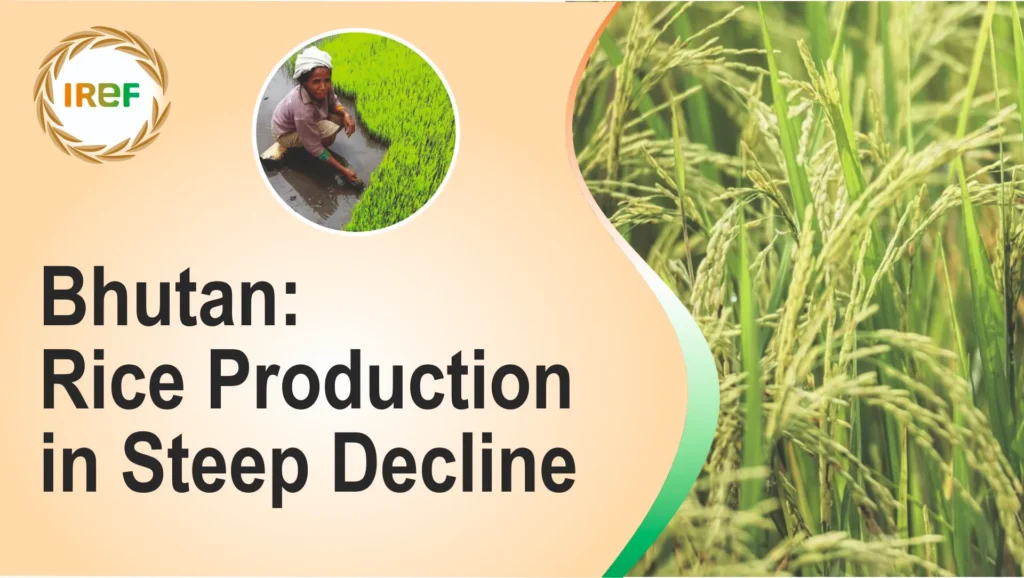Rice is the staple food of Bhutanese meals. However, Rice production and the number of rice growers have been continuously decreasing in Bhutan over the years. This situation triggered concerns over National food security. The 2025 Integrated Agriculture and Livestock Census of Bhutan (IALC) believed that the major factors behind this decline in Rice production are persistent labour shortages, contracting farmland, and increasing conflict with wildlife. Moreover, they have cited the data, which shows, total cereal production in 2024 stood at 72,177 metric tonnes (MT), a 4.92 per cent increase from 68,786MT in 2023.
Rice holds a major cultural and acreage significance among various grains, such as Paddy, maize, wheat, barley, buckwheat, millet, and quinoa, which are the primary cereal crops cultivated in the country. Bhutan produced 41,352.28MT of irrigated paddy and 185MT of upland paddy, totalling 41,537.28MT, whereas irrigated paddy production increased by 1.94 per cent (789MT) compared to 2023, upland paddy production saw a sharp decline of 23 per cent (56MT) in this year.
At present, 20,920 paddy growers are cultivating 23,633 acres of land. Punakha dzongkhag has been identified as the top producer with 8,027.35MT of paddy, reasserting its title as Bhutan’s rice bowl. However, Pemagatshel comes in the lowest position as it recorded 47MT.
Interestingly, most of the Rice growers in Bhutan cultivate modern rice varieties like Bajo Maap 1 and 2, Bajo Kaap 1 and 2, Yusi Ray Maap, and Yusi Ray Kaap.
The data of the past five years shows that the number of paddy growers has displayed a continuous decline. From 23,620 irrigated paddy farmers in 2021, the figure fell to 20,920 in 2024. In the same year, Upland paddy growers reduced from 1,907 in 2020 to just 825 According to the National Plant Protection Centre (NPPC), rice accounts for 53 per cent of the daily dietary energy for Bhutanese people. However, domestic production covers only 45 per cent of the country’s rice requirement, with the rest imported mostly from India.
Notably, there are several factors responsible for making cultivation unfeasible and a decline in rice production in Bhutan, such as Rice Blast (a fungal rice disease), labour shortages, deteriorating human-wildlife conflict, as crops are attacked by Elephants and boars. In addition, urbanisation and shifting socio-economic conditions have decreased the arable land and discouraged cultivation.



